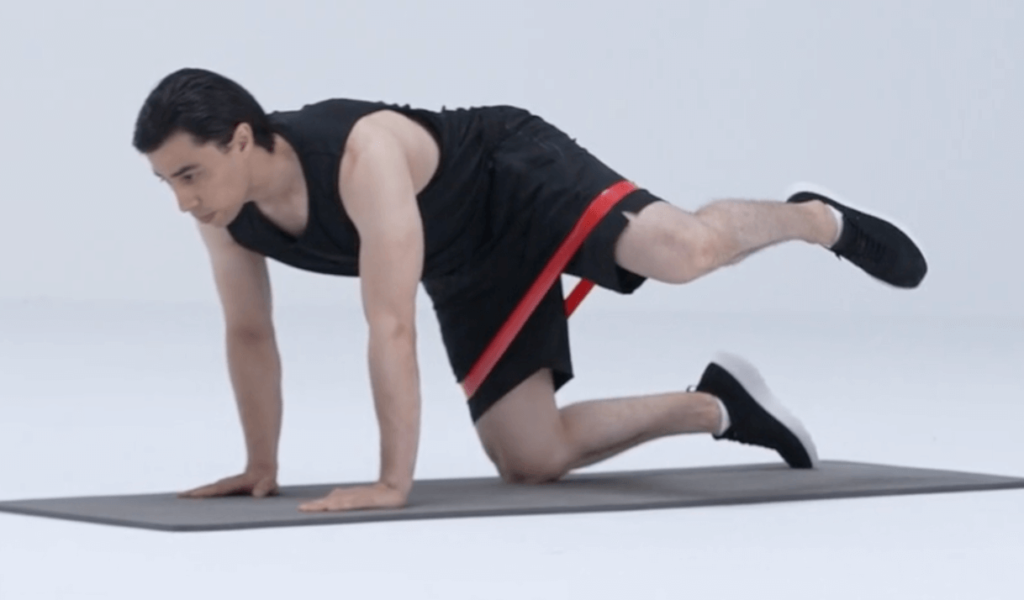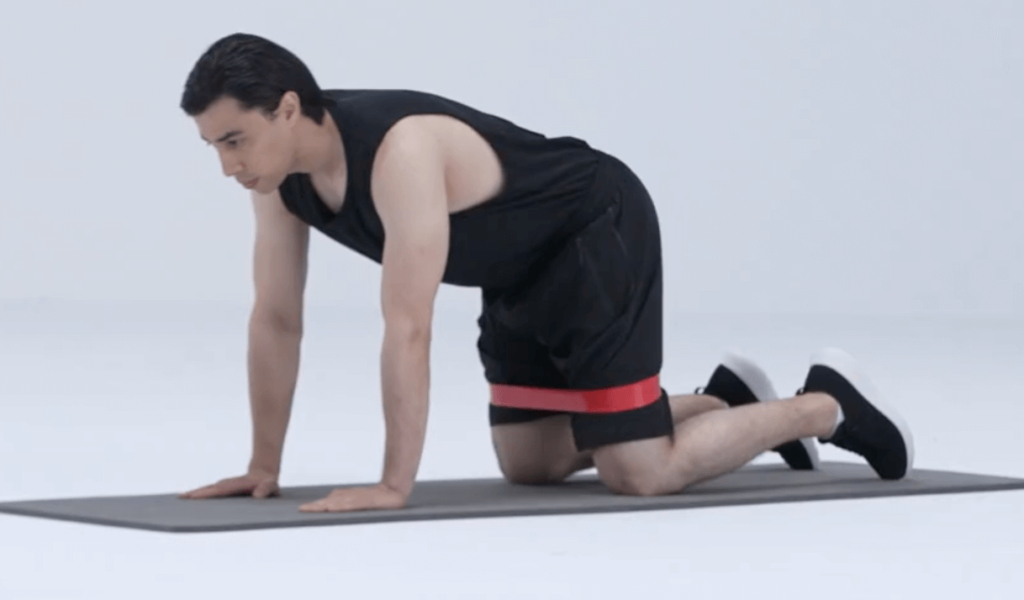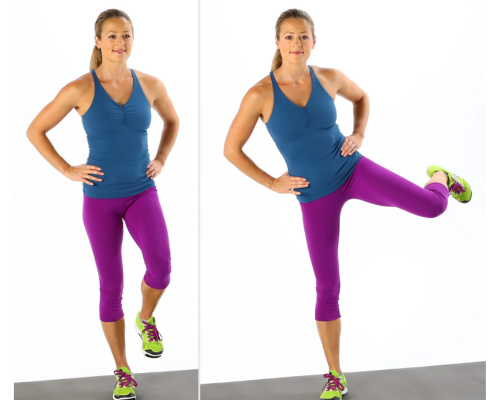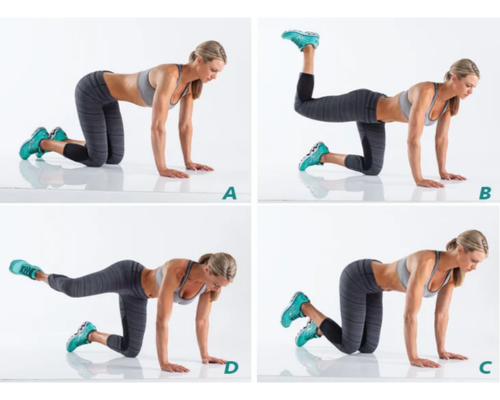


Introducing the Banded Fire Hydrant—an exercise that will set your glutes ablaze! It’s a recipe for sculpting those glutes and hips while unleashing a whole new level of strength and stability. Whether you’re a fitness enthusiast looking to amp up your routine or a newcomer seeking an exercise that’s both effective and entertaining, the Banded Fire Hydrant is here to steal the show.
Get ready to activate those glute muscles, enhance your hip mobility, and ignite your fitness journey with this captivating exercise that’s sure to make a splash in your workout routine!
Key Takeaways
- Targeted Muscle Group: Banded Fire Hydrants specifically target the gluteus medius, which is crucial for hip stability and lower body strength.
- Core Engagement: Engaging core muscles is essential to maintain proper form and balance during the exercise, leading to improved core strength and stability.
- Injury Prevention: Strengthening the glutes and hips through Banded Fire Hydrants can help prevent common lower body injuries like knee pain, IT band syndrome, and lower back issues.
- Customizable Sets and Reps: The number of sets (2-4 right leg) and repetitions (10-15 per left leg) for Banded Fire Hydrants can be adjusted based on individual fitness goals and levels.
- Variety in Lower Body Exercises: Apart from Banded Fire Hydrants, incorporating exercises like Squats and Fire Hydrant Kick can be great exercises to further strengthen hip muscles and improve overall lower body strength.
Banded Fire Hydrant Instructions
Banded Fire Hydrant is an exercise that targets the glutes and hips. It involves using a resistance band to add an extra challenge to the movement. Perform the fire hydrant exercise variations using the Fire Hydrants as usual. Here are instructions on how to perform the Banded Fire Hydrant exercise:
- Start by placing a resistance band around your thighs, just above the knees. Choose a band with an appropriate level of resistance for your fitness level.
- Position yourself on all fours on a mat or comfortable surface. Align your hands directly under your shoulders and your knees under your hips.
- Engage your core muscles by drawing your belly button towards your spine. Maintain a neutral spine throughout the exercise, avoiding any excessive arching or rounding of the back.
- Keeping the resistance band taut, begin the movement by lifting one leg out to the side while keeping the knee bent at a 90-degree angle.
- Hold the position for a moment at the top, then slowly lower your leg back to the starting position, controlling the movement.
- Repeat the movement on the same leg for the desired number of repetitions.
- Switch to the opposite leg and perform the same movement, lifting it out to the side while maintaining the 90-degree knee bend.
- Continue alternating between legs for the desired number of sets or times.


Sets And Reps
The number of sets and reps for the Banded Fire Hydrant exercise can vary depending on your fitness goals, current fitness level, and the overall structure of your workout routine. Here are some general guidelines:
Sets
Aim for 2-4 sets of the Banded Fire Hydrant exercise. Starting with fewer sets and gradually increasing the number as you progress is a good approach. If you’re a beginner, start with 2 sets and gradually work your way up.
Reps
Perform 10-15 reps per leg for each set. This range is suitable for most individuals. However, if you find it too challenging or not challenging enough to start a position, you can adjust the number of reps accordingly. If you’re a beginner, you can start with fewer reps, such as 8 reps left leg.
Rest
Take a short rest period, around 30-60 seconds, between sets to allow for recovery. This will help maintain the quality of your form and performance throughout the exercise.
Banded Fire Hydrant Benefits
The Banded Fire Hydrant exercise offers several benefits for your lower body, particularly targeting the glutes and hips. Here are some of the benefits of incorporating Banded Fire Hydrants into your workout routine:
Glute Activation
The Banded Fire Hydrant and Hydrant exercises are specifically designed to target the gluteus medius, a crucial muscle for hip stability and lower body strength. By activating and strengthening this muscle, these exercises enhance hip stability, balance, and overall functional movement patterns, ultimately benefiting your lower body strength and mobility.
Hip Strength and Mobility
The exercise engages the hip abductor muscles, including the gluteus medius and minimus, which play a crucial role in hip extension, stabilizing external rotation of the hips, and maintaining proper alignment of the hip.
Core Engagement
During the Banded Fire Hydrant exercise, maintaining proper form and balance necessitates core stabilization. This engagement of the core muscles not only enhances balance but also contributes to overall core stability, amplifying the benefits of the exercise.
Injury Prevention
Incorporating exercises like the Banded Fire Hydrant into your routine can fortify the glutes and hips, a crucial step in averting prevalent lower body injuries such as right knee pain, IT band syndrome, and lower back issues.
Enhancing hip stability and strength not only mitigates the risk of imbalances but also minimizes compensatory movements in the hip joints, thus curbing the likelihood of injury.
Banded Fire Hydrants Variation
Here are two exercise variations that target the lower body, specifically the hip muscles, while also shaping and strengthening the thighs, hips, legs, and glutes:
Standing Fire Hydrants

Standing fire hydrants is another effective exercise that targets the glute muscles, particularly the gluteus medius. Here’s how to perform the Standing Fire hydrants and Hydrants:
Starting Position:
Stand with your feet hip-width apart and hands-on-hips or extended in front of your left side or right-hand side for balance.
Execution:
- Stand with your feet hip-width apart and your hands resting on your hips or extended out in front of you for balance.
- Engage your core muscles to stabilize your torso.
- Lift your right leg out to the side while keeping your knee bent at a 90-degree angle.
- Keep your foot flexed and your toes pointing forward.
- Pause briefly at the top of the movement, feeling the contraction in your glutes.
- Slowly lower your right leg back to the starting position.
- Repeat for the desired number of repetitions, then switch sides and perform the exercise with your left leg.
Fire Hydrant Kick

The Fire Hydrant Kick exercise is a combination movement that combines the standing Fire Hydrant and the Glute Kickback exercises. Here’s how to perform the Fire Hydrant Kick:
- Start on all fours on the ground, with your hands directly under your shoulders and your knees under your hips.
- Engage your core to maintain stability throughout the exercise.
- Lift one knee out to the side, keeping it bent at a 90-degree angle, until it is parallel to the ground. This is the starting position.
- From this position, extend your lifted leg out behind you, fully straightening the leg.
- Engage your glutes and hamstring muscles as you kick your leg back.
- Slowly return to the starting position by bending your knee and bringing it back to the side.
- Repeat for the desired number of repetitions on one side before switching to the other side.
Conclusion
Incorporating Banded Fire Hydrants into your workout routine can provide a range of benefits including targeted glute activation, improved hip strength and mobility, core engagement, and injury prevention. The next time you want to work those glutes or fire up your lower body, be sure to try this exercise out!
What are banded fire hydrants good for?
What part of the glutes do fire hydrants work?
Daniel Bubnis, M.S. (2019). How to Do Fire Hydrant Exercises. Available at: https://www.healthline.com/health/exercise-fitness/fire-hydrant-exercise [Accessed 26 Mar 2024].
Paulina Kairys. (2023). Fire Hydrant Exercise: How To, Benefits, & Variations. Available at: https://www.setforset.com/blogs/news/fire-hydrant-exercise [Accessed 26 Mar 2024].





